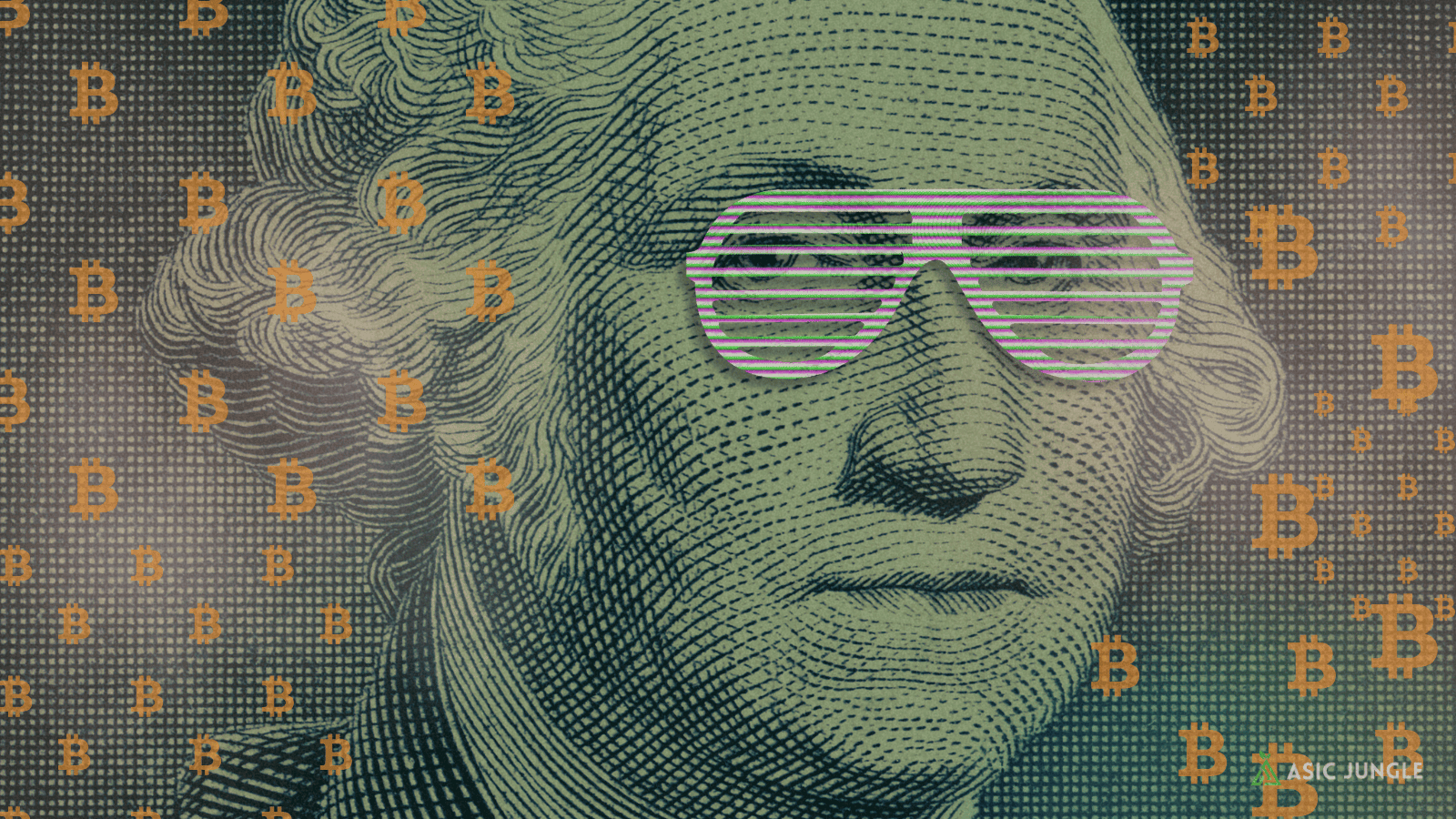Recent news has had much to say about activity from the BRICS nations. With China leading the way, BRICS is hinting toward an alternative currency that may prove to be particularly consequential for the role of the US in global geopolitics. In the wake of the destabilization of the global monetary status quo, it is predicted that Bitcoin will take greater leaps along its adoption curve.
What seems like a complicated affair ultimately aligns with the singular trajectory of the Bitcoin thesis. As the reasoning goes, fiat currency, being inherently subject to manipulation and historically proven to lack staying power, underpins a monetary system detached from sound principles, thus eroding and displacing wealth.
Alternatively, Bitcoin, unlike gold or fiat, entails a form of money that cannot be co-opted, proposing a long-term solution to the chronic upheavals caused by economies operating on centrally mandated gold and fiat money standards.
In this light, the recent weaponization and rampant debasement of the US dollar depicts irresponsible currency management. In search of shifting away from a global monetary monopoly, the BRICS nations are reported to be assessing alternatives.
Meanwhile, with each new user, community, and layer of innovation, Bitcoin is networking value for those who wish to opt for an entirely different monetary future; one based on sound and incorruptible thermodynamic, economic, and ethical principles.
Asic Magazine will continue monitoring the broader implications of these substantial shifts in our global monetary order. This article plays with three suggested phases in the game theory behind hyperbitcoinization in relation to recent noteworthy shifts in global geopolitics.
What is Hyperbitcoinization?
The term "hyperbitcoinization" was first coined by Daniel Krawisz, an early Bitcoin enthusiast and writer, in a 2014 article titled "Hyperbitcoinization: Winner Takes All".
In the article, Krawisz argued that Bitcoin has the potential to become the dominant global currency due to its unique properties, including its limited supply, immutability, and decentralization. He suggested that hyperbitcoinization could occur through a series of phases, eventually leading to its use as a medium of exchange for everyday transactions.
Since then, the term "hyperbitcoinization" has been used by the Bitcoin community to describe the hypothetical scenario where Bitcoin becomes the dominant global currency.
What brought us here?
As led by China, competing with the US dollar’s dominance follows a decades-long storyline. It begins with the Bretton Woods agreement sparking the US dollar’s world reserve currency status in 1944.
This date marks the start of an unrivaled era of power for the United States. Theoretically, as long as the US maintains the integrity of their dollar, they could stretch their dominance for many decades.
However, following their departure from the gold standard in the 1970s, it didn’t take long for the debt-to-GDP ratio of the US to start painting a dark picture. As of 1985, the US became a debtor nation for the first time since WW1, meaning the US owes more money to foreign creditors than is owned by the US. This situation has only worsened; today, the US is one of the largest debtor nations in the world.
To compensate, the US became a military, economic, and geopolitical behemoth so pivotal to global trade that their leverage upon the world could allow the prolongation of their skewed accounting.
Simply speaking, when everyone uses your currency, you can effectively pay your debts for free by printing money.
This is a game that no nation in history has played for long. Centrally coordinated money is historically prone to runaway debt, leading to hyperinflation and subsequent default. As is naturally reasonable, borrowing from the future is only sustainable in a system where economic growth stays within reach of debt.
Phase 1: Bitcoin as a store of value
The first serious cracks in the US-lead monetary world order became apparent during the 2008 financial crisis. 2008 happened to coincide closely with Bitcoin’s birth, offering the world its first glimpse into a monetary standard with the potential to render obsolete centrally coordinated money.
Bitcoin, however, is a radical new technology whose adoption starts at the grassroots level. More often than not, radical ideas take time to gather momentum—and in Bitcoin’s case, time to gather value.
Today, about 14 years later, we can confidently observe that Bitcoin, as a recognized commodity, has demonstrated the ability to store value, thus fulfilling a critical early stage of the hyperbitcoinization concept.
Shifting to a multi-polar world
As you likely know, money printing accelerated heavily in the developed world with the onset of the pandemic. Interest rates have recently been ratcheted up in an attempt to tame the resulting inflation, but catching up to the US’ total debt is now a foregone conclusion, technically implying a default on the loan upon which the United States operates.
Putin has since initiated the war in the Ukraine, exacerbating our global monetary house of cards. Before long, the US started weaponizing the dollar by sanctioning Russia from global trade, setting a dangerous precedent: don’t play by the USA’s rule-based order, and you’ll be excluded from global trade.
Russia’s annexation has placed them in an especially vulnerable position, subject to the whims of nations neutral to western views on the war in Ukraine: BRICS. While the western world has been largely on board with the USA’s antics, broader geopolitics have been more gray, hinting preference toward a multi-polar system of international law.
Compounding complications: Saudi Arabia, India, and South America
A telling complication has been the recent burgeoning independence of middle-eastern OPEC nations, namely Saudi Arabia’s influence on oil trade dynamics. Since the 70’s, the US and Saudi Arabia have exchanged oil trade security for US dollar-denominated Saudi oil transactions in what has been known as the “petrodollar” era.
This era gave the US enormous leverage upon global trade. With Saudi Arabia’s recent announcement that other currencies, including Russian Rubles, Indian Rupees, and Chinese Yuan, are being considered in exchange for their oil, the US dollar’s influence seems to be eroding.
Furthermore, in response to the weaponization of the US dollar, India, and leading South American nations, Argentina and Brazil, have also opted to de-dollarize their trade.
Phase 2: Bitcoin’s national-level proliferation
An idea has been circulating that the BRICS solution is the creation of a new currency whose value is based on an underlying basket of commodities. However, the resulting currency, ultimately centralized, and likely a CBDC, would remain subject to the principles that have been predicated to the failing longevity of the (not so) beloved USD.
Therefore, the Bitcoin thesis remains intact and poised as a haven for individuals and nations during the turbulence inherent to global monetary shifts. In the midst of the confusion, our second phase toward hyperbitcoinization predicts that larger swaths of people and nations will flee into Bitcoin.
Bitcoin becoming commonplace on the balance sheets of governments and an influx of nations declaring Bitcoin as legal tender are indications of having reached this phase.
We are on the precipice of this phase today as the BRICS nations introduce an era with multiple currencies competing for world reserve status. It’s tricky to predict how long this phase will last, but my estimate is between 10 and 20 years.
Phase 3: Hyperbitcoinization
Hyperbitcoinization, as you might expect, describes when Bitcoin as a medium of exchange has permeated the world. It does not imply that national currencies will have disappeared, but that Bitcoin will be the dominant money.
Describing what a hyperbitcoinized world will look like is inherently tricky, because it would be unlike anything in human history.
My speculation is that it would dawn an era of organic collectivism; a circular economy closely tied to the reality of the carrying capacity of the Earth as a direct result of the galvanization of the sovereignty of individuals. In a hyperbitcoinized world, I suspect that professional politicians will have become obsolete, and that national boundaries will be more permeable. That being said, I think getting there will be a bumpy road as centralized regimes cling to power in their decaying days using AI and CBDCs.






